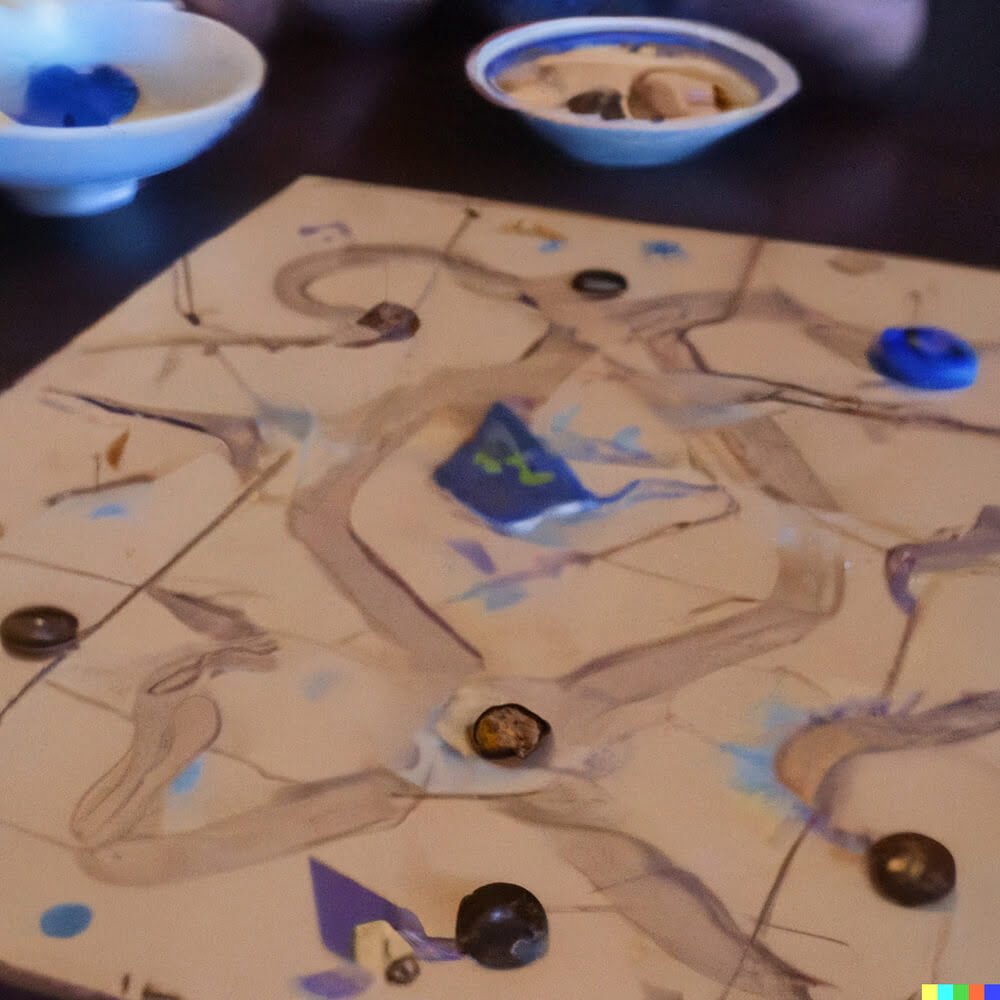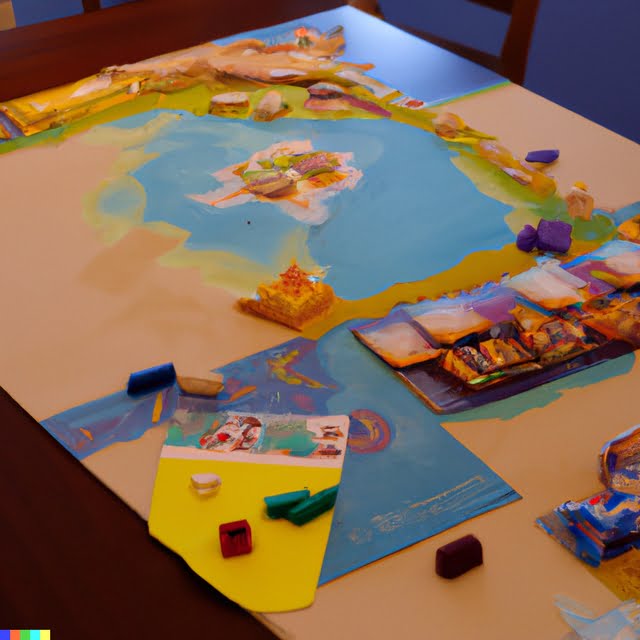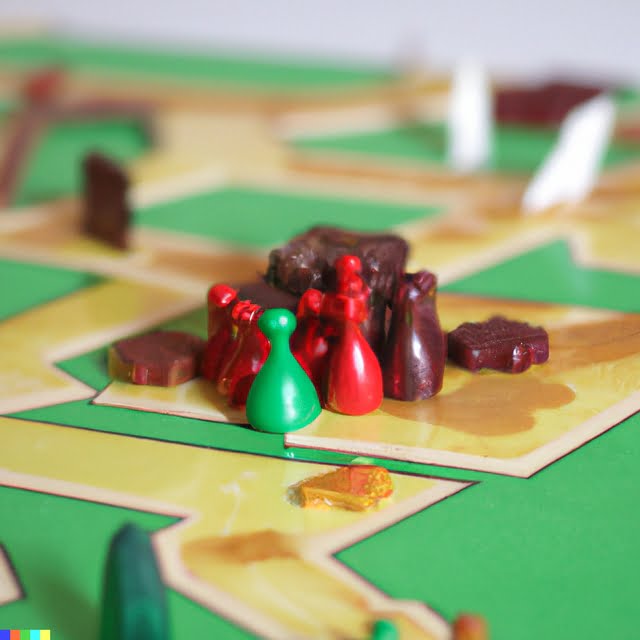Introduction
Selling a board game concept can be a great way to make some money and share your creative vision. Board games have become an increasingly popular form of entertainment for people of all ages, which provides a fantastic opportunity for those looking to turn their creative ideas into reality. When selling a board game concept, having an effective pitch or presentation is essential in order to secure the interest of potential buyers. The following steps will help you put together the perfect sales pitch and convince buyers that your board game concept offers a unique and exciting form of play.
Research Your Idea – Make sure you’re knowledgeable about your own board game concept so that you can answer any questions that potential buyers may ask. Not only should you take some time to analyze all aspects of the game, but researching similar ones currently on the market can give you an idea as to what is successful and what isn’t working well. This will allow you to focus on highlighting original aspects and advantages of your own design that set it apart from others already available.
Identify Your Target Audience – In order for your board game concept to be successful, it needs to meet the needs of its intended audience. Consider who would most likely enjoy playing this type of game, such as adults seeking something lighthearted or children preferring more vibrant colors, engaging storylines, or educational variety in play styles. You should also include any age range restrictions and/or necessary skill level so buyers have no doubt about whom your product is aimed at attracting.
Create A Prototype – Having a prototype prior to presenting your board game concept grants you the advantage being able to demonstrate exactly how it works right away instead of merely explaining the rules behind it with words alone; this allows buyers to fully understand its mechanics without creating any confusion or misunderstanding that could risk turning them away from acquiring it in favor of another option they deem better suited for them
Advertise and Pitch – Advertising your idea ahead of pitching is always recommended so as to create hype amongst prospective buyers and form excitement over its potential release date. Before going into details regarding how much it would cost them in order to purchase rights over the board game design, detail some major benefits such as its ability in providing players with hours upon hours worth of enjoyment due to its replayability factor; this serves both as informative reassurance but also convinces customers about the long-term value associated with investing in it for future distributions within stores nationwide if not globally.
Research Your Idea
Before selling your board game concept, it is essential to conduct market research to understand the current trends and preferences regarding boardgames. Consider your target audience and age range, as this will help you to square off against competitors. Ask yourself what would make your game stand out from the others on the market? How could you add a unique game mechanic or theme that will attract gamers? Research what genres of games tend to be popular in certain regions or interests. You should also consider studying reviews of similar games so that you can identify areas of improvement or further development. Finally, calculate how much money it will cost to produce and distribute your product so you can price it competitively.
Preparation
Before you start pitching your board game concept to any potential buyers, it’s important to make sure that your materials and research is prepared. Make sure that the concept of your game is explained clearly and thoroughly through write-ups, presentations, prototypes and illustrations. Your description should include how the game works, its unique elements, target audience and how it will be different from similar titles on the market. Additionally, research what type of market exists for this product. Get an understanding of the current trends in board games, review popular titles within the genre, assess who would be most likely to buy this particular type of game, as well as any competition that might already exist in the industry. Finally do some pricing research as you may need to adjust your price point depending on what competition exists in order to be more competitive or appealing. With all this information gathered together you can then create a detailed proposal which should include possible retail prices for both brick and mortar stores as well as online outlets if applicable. This proposal needs to demonstrate why your game is unique and special enough for potential buyers to invest their time and money into it.
Connect With Buyers
Once you have a board game concept in mind, the next step is to connect with buyers and make a successful pitch. To do this, start by researching potential buyers. Look at which industry leaders are involved and determine what kind of products they manufacture or distribute. Search for their contact information so you can reach out.
You can also look at board game websites, stores, and publications ” as well as gaming conventions and events ” to find people in the gaming industry who may be interested in buying your concept. Keep detailed notes of everyone you contact and how to follow up if they don’t respond immediately.
Once you’ve compiled a list of contacts, it’s time to write up an initial pitch for them. Your pitch should briefly describe your concept in 3-4 sentences only and why it would be interesting for the buyer’s target market. Include a brief overview of your board game design as an added bonus such as any innovative features that may set it apart from other similar games already on the market. It’s important to try to keep this concise but appealing enough that the buyer would want to hear more details about your concept later on.
After your initial pitch has been sent out, make sure that you follow up with each individual buyer after some time has passed if they haven’t responded yet. Make sure that when speaking or communicating with potential buyers that you remain professional, courteous, and genuinely excited about what your board game concept has to offer their customers or audiences!
Closing the Deal
Once you have come up with a great board game concept, closing the deal is the most important part of selling your product and bringing it to life. First, you need to create a plan and make sure it has a deadline and requires action on both ends. An effective plan will help define and guide your negotiation process.
Next, you should research the potential buyers to ensure you are engaging with the decision makers who are most likely to invest in your concept. It is also important to decide which details of the game should be shared during negotiations- do not share all of the plans for your game up front as this could lead to someone using legal means to purchase rights for themselves or remove them from the table completely.
Once final negotiation terms have been reached, you need to create an agreement document that clearly outlines what each party will do. The document should include details about payment terms, royalty structures, who owns what parts of the game design, copyright information, publication requirements etc. Make sure that both parties read and understand everything before signing it off!
Finally, it’s important to engage in follow-up after signing off on any agreements made during negotiations. Set up regular meetings or conference calls with your partner/s and keep them updated on how the project is coming along by sending progress reports as well as any necessary changes in deadlines/ conditions due to unforeseen circumstances. This can help build trust between all parties involved by showcasing that hard work is being put in despite any obstacles that arise along the way–and could result in future collaborations too!
Creative Tips
One creative strategy for selling a board game concept is to start off by creating a demo version of the game. This should be a non-digital version of the game with materials that potential buyers can interact with. Doing this is especially important if your concept has never been developed before. If a demo version of your game already exists, then try refining it to give buyers a better understanding of how the finished game would look and function.
Another creative strategy is to reach out to the right people in the industry who have influence over making decisions about purchasing new games. Networking with people in the gaming industry who could potentially help you market your concept and vouch for it, such as game reviewers, bloggers and YouTube personalities, can be very beneficial. Show them some sketches of your idea and explain why it could be fun and interesting for players.
Finally, consider using crowdfunding platforms like Kickstarter or Indiegogo to launch your board game concept by gathering donations or pre-ordering from potential customers ahead of time. Crowdfunding allows you to generate interest and gather resources without putting too much of your own money into production costs at first. It also gives you data on which games concepts are most popular among gamers so that you can make changes accordingly before submitting the final product for sale.
Summary
Selling a board game concept can be a daunting task, with an incredibly competitive market and a range of considerations to keep in mind. However, by understanding what makes a successful game and developing a unique idea for the game, you can successfully navigate the pitching process.
When planning your board game concept, plan out every aspect including its original story or theme, target demographic, components & artwork needed for your prototype, and potential mechanics that could bring life to your idea. Consider the competition in the market and any potential costs associated with manufacturing.
Once these considerations have been made it is time to present your concept to publishers or crowdfunders. Focus on delivering a clear, meaningful pitch that covers all aspects of the game as well as strategies you may use to promote it if necessary. Once you find buyers who are interested in bringing your board game concept to life, it is important to understand their expectations as well as terms stated in any contracts presented and make sure they line up with your desired outcome.
To conclude: Selling a board game concept can be intimidating yet immensely rewarding when potentially having your product seen on store shelves or someone playing it at their favorite convention – simply passion for design & creating stand out amongst many holders of an idea. Having concrete plans and steps put into place can help order the numerous tasks required before selling aforementioned idea. Keeping realistic expectations versus what will be eventually achieved will prove helpful during every stage of selling this type of product also – remembering that working with integrity & depending upon true products qualities will ensure long standing success much more than taking shortcuts will ever produce.

I love playing all kinds of games – from classics like Monopoly to modern favourites like Ticket to Ride.
I created this blog as a way to share my love of board games with others, and provide information on the latest releases and news in the industry.





